Jean Fouquet (1420 – 1481) was a French painter, illuminator, and miniaturist of the 15th century. During his time, his works were greatly recognized in the French courts as he was a fine portrait painter. Fouquet’s patrons were mainly Kings and nobles, in fact he was the official painter of Charles VII and Louis XI. However, appreciation for Fouquet went beyond his native land. He travelled to Rome and painted Pope Eugenius IV with his nephews, this proves Fouquet’s high distinction as an artist, although the painting now is unfortunately lost. Because of his travels, he managed to pick up on the techniques and styles of Italian masters. It was Fouquet who was responsible for introducing Renaissance art into France.
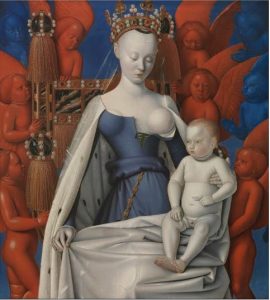
This painting is a favorite of mine particularly because of the contrast between the pale skin of Madonna and Baby Jesus against the rich red and blue cherubs that fill the background. The shine and the spherical shapes of the cherubs almost make it seem like they could be plastic toys. The details on the throne and crown of shiny pearls, jewels, and giant golden tassels add extravagance to the piece.
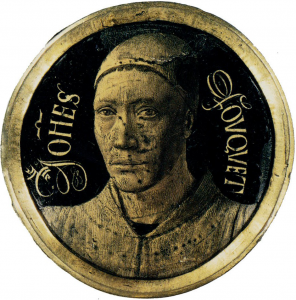
This piece is the earliest self-portrait miniature created, which demonstrates Fouquet’s innovation. At the time, self-portraits and even signing ones work weren’t common. I find his signature interesting as it implies he wanted to claim ownership of the medallion and was aware of his status as an artist.
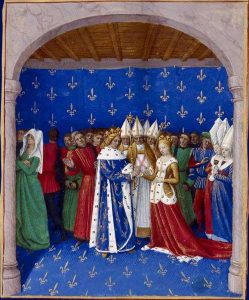
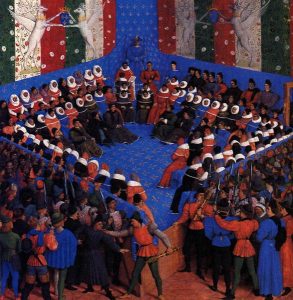
These two paintings are similar in the use of colour. The boldness of the red, blue, and green allow for the white and gold accents to pop out. They both have the blue background with the fleur-de-lis pattern, establishing Fouquet’s homeland. Out of the two I would say I like Cases of noble men and women better because of the unusual composition of the figures and how they’re placed all in a square without any focus subject in the center.
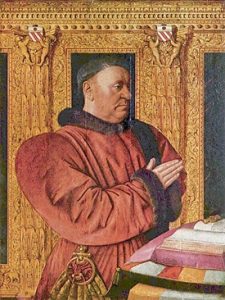
This portrait is successful in showing the power of the Chancellor of France. The golden architectural decoration in the background displays nobility. So does his exaggerated red robe with brown trimming. I believe the gold and red work together to frame his face, enhancing the look of strength and prestige.
Sources:
https://www.britannica.com/biography/Jean-Fouquet
http://www.visual-arts-cork.com/old-masters/jean-fouquet.htm
https://www.wikiart.org/en/jean-fouquet/cases-of-noble-men-and-women
https://www.wikiart.org/en/jean-fouquet/madonna-and-child-left-panel-of-diptych-de-melun
https://www.wikiart.org/en/jean-fouquet/self-portrait
https://www.wikiart.org/en/jean-fouquet/marriage-of-charles-iv-and-marie-of-luxembourg
https://fr.wikipedia.org/wiki/Portrait_de_Guillaume_Jouvenel_des_Ursins